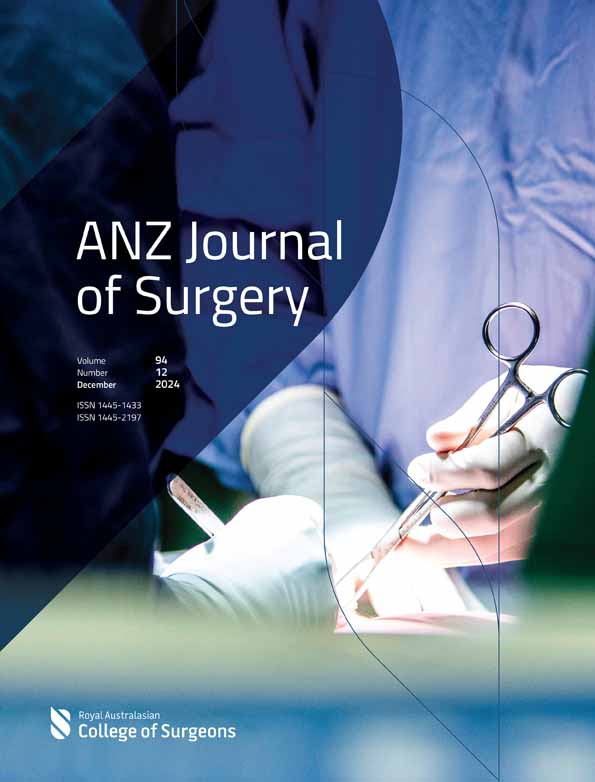Is routine axillary staging still required in clinically node negative early breast cancer in women over 74 years?
Abstract
Background
Investigate incidence and identify predictors of axillary lymph node metastases in early breast cancer in women >74 years Australia and New Zealand to inform decision making about sentinel lymph node (SLN) biopsy in this population.
Methods
Retrospective review of invasive breast cancer in women in Australia and New Zealand between 2010 and 2022 using BreastSurgANZ Quality Audit Database. Data included patient demographics, tumour characteristics, surgery type, axillary nodal status and adjuvant therapy. Descriptive analysis of incidence of axillary nodal metastases and use of adjuvant therapy in various patient and tumour groups was performed, followed by statistical analysis using multivariate logistic regression to identify predictors of axillary nodal positivity and correlation between nodal status and prescription of adjuvant therapy.
Results
Review of 127 436 cases of invasive breast cancer, 17 599 cases >74 years. Two thirds of the overall population and in those >74 years were node negative. In patients >74 years with grade 1–2, T1a-b cancers, ER+/HER2− 94% were node negative. Patient age, tumour size, grade and biomarker profile correlated with axillary nodal status and analysis of adjuvant therapy revealed significant correlation between nodal stage and adjuvant radiotherapy, chemotherapy and endocrine therapy.
Conclusion
A total of 94% of patients >74 years with T1a/b, ER positive HER2 negative breast cancer were node negative. Nodal status significantly influences adjuvant treatment in this patient group and therefore, we recommend clinicians consider tumour factors and patient fitness in their decision making about SLN biopsy in the elderly population with hormone receptor positive early breast cancer.
Conflicts of interest
The authors have no conflicts of interest to declare and no funding was received for the project.




